Handspinning Luxurious Fibres: Goats, Rabbits, & Yak!
Handspinning with goat and rare fibres opens a world of luxurious textures, rich histories, and unparalleled creativity. These fibres, ranging from the silky softness of cashmere and the shimmering lustre of mohair to the delicate warmth of yak and Pygora, offer spinners an opportunity to craft unique, high-quality yarns. Exploring these rare and exceptional fibres not only enhances your spinning repertoire but also deepens your appreciation for the art of transforming raw material into exquisite, handmade textiles. Whether you’re an experienced spinner or just beginning, these fibres promise a rewarding and inspiring journey.
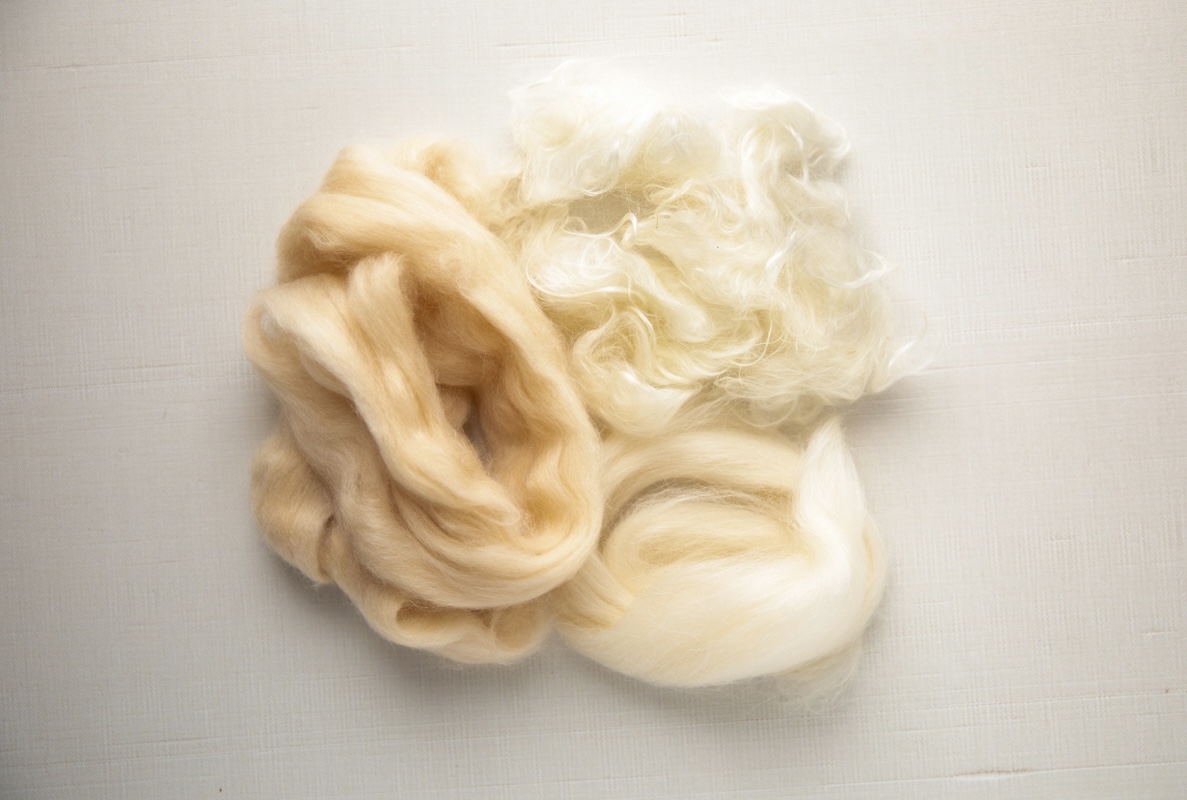
Top left: pygora, Top right: mohair, Bottom right: cashmere.
Cashmere: Soft Luxury
Cashmere fibre is a luxurious and sought-after fibre in the world because it is exceptionally soft, warm and fine, which makes it a favourite with handspinners. Cashmere comes from the downy undercoat of various goat breeds, including Pashmina, Mongolian Cashmere, Inner Mongolian Cashmere and others. A general term for cashmere-producing goats, Capra Hircus Laniger, identifies those goat breeds that are selectively bred for their ability to produce high-quality cashmere. Depending on the breeding practices and environmental conditions, there is much variance in the quality of cashmere, and generally, it is used in a wide range of luxury textiles. These cashmere-producing goats are generally found in Asia, including Mongolia, China, India and Iran. Now, they can also be found in Australia, New Zealand and the United States through breeding programs and importation.
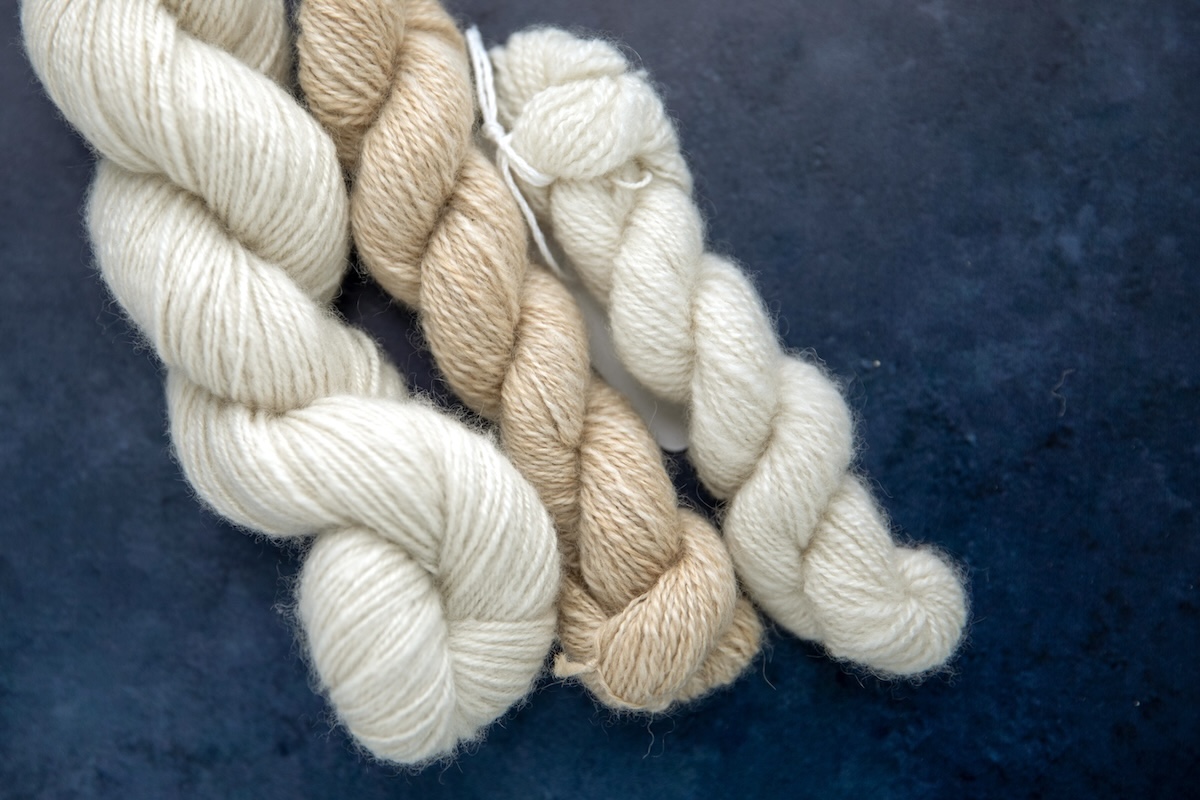
Renowned for its fineness, measuring between 14 to 19 microns, cashmere is much finer than most other animal fibres, including sheep’s wool. This contributes to its softness: the fine, delicate structure of cashmere gives the fibres an incredibly soft feel, making cashmere fabric so highly prized. The staple length of cashmere ranges from 3 to 9 cm (1.2 to 3.5 in). Generally, cashmere is spun into fine yarns, or singles are plied together for thicker yarns rather than attempting to spin a thicker single.
Bred for the prized white because of its ability to take on dye easily, cashmere is also available in grey, brown and black. Combing the animals yields high-quality fibre and gently removes the undercoat without harming the goat. Shearing is done in certain regions but doesn’t seem to be as ideal as taking the time to comb when the goat is naturally moulting their undercoat in the spring. The goats generate a small amount of fibre yearly, about 150 – 200 g (5 to 7 oz) after it is dehaired. This is part of the reason it is so highly valued!
Dehairing means removing the coarse outer hair, which mixes with the softer undercoat on the animal. The highest quality cashmere will be completely dehaired. Check the fibre you have to see how well it has been dehaired and remove the last few by hand as needed. Ensure, like most of our spinning fibre, that the fibre is clean before starting to spin.
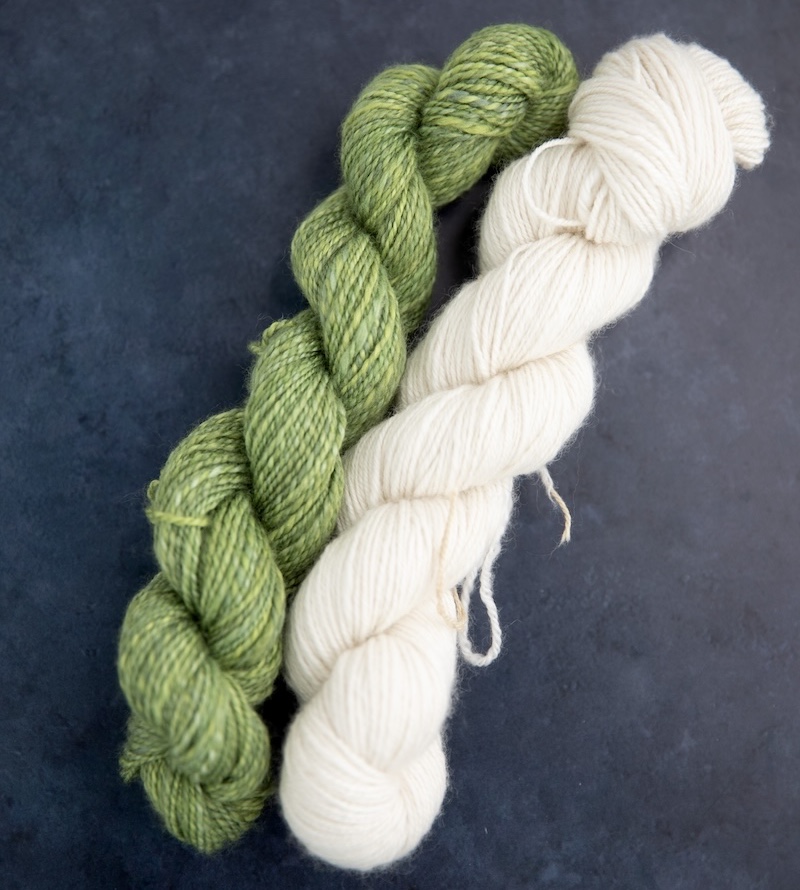
Cashmere is versatile and can be spun worsted- or woollen-style. In my experience, spinning from the cloud has worked beautifully, creating a soft, lofty yarn. Because the fibres are delicate compared to sheep’s wool, work with a light touch, cradling the fibre in the fibre supply hand and drawing slowly backwards, ensuring enough twist is entering the fibre. Due to the fineness of the fibres, it will naturally spin a thin yarn, and more twist will be needed, as the fibres have no scales to assist in holding the yarn together. Ensure slightly more twist than you think is necessary is placed into the yarn, giving it a slightly prickly feel. This will wash out as some of the twist will dissipate in the water, leaving a structurally sound, soft, light yarn.
A great way to extend cashmere is to blend it with other fibres, including alpaca, sheep’s wool, silk, and more. Cashmere offers lovely texture and lightness. Sheep’s wool will add elasticity and strength. Silk, alpaca, and other camelids will add luxury and sheen. Most of these fibres also offer warmth! Because cashmere fibres are unique and precious, plus they offer softness and warmth, they will make anything you choose luxurious and delicate.
Mohair: Strength & Durability
A specific breed of goat, namely the Angora goat, provides us with a luxurious and versatile fibre called mohair, which is known for its lustre, strength and unique characteristics. Handspinners often use mohair in place of nylon for creating sock blends. Mohair is also known for its halo, which is often created in brushed Kid Mohair-Silk yarns, which have been all the rage for the past few years. The majority of Angora goats are bred and raised in South Africa, which provides most of the world’s supply, along with the United States (Texas), Turkey and Lesotho.
Goats are sheared twice per year, producing 4 to 6 kg (8.8 to 13.2 lbs) of mohair annually. The staple length of the fleece is between 10 and 15 cm (4 to 6 in) in length, which lends itself to worsted- or woollen-style preparation and spinning.
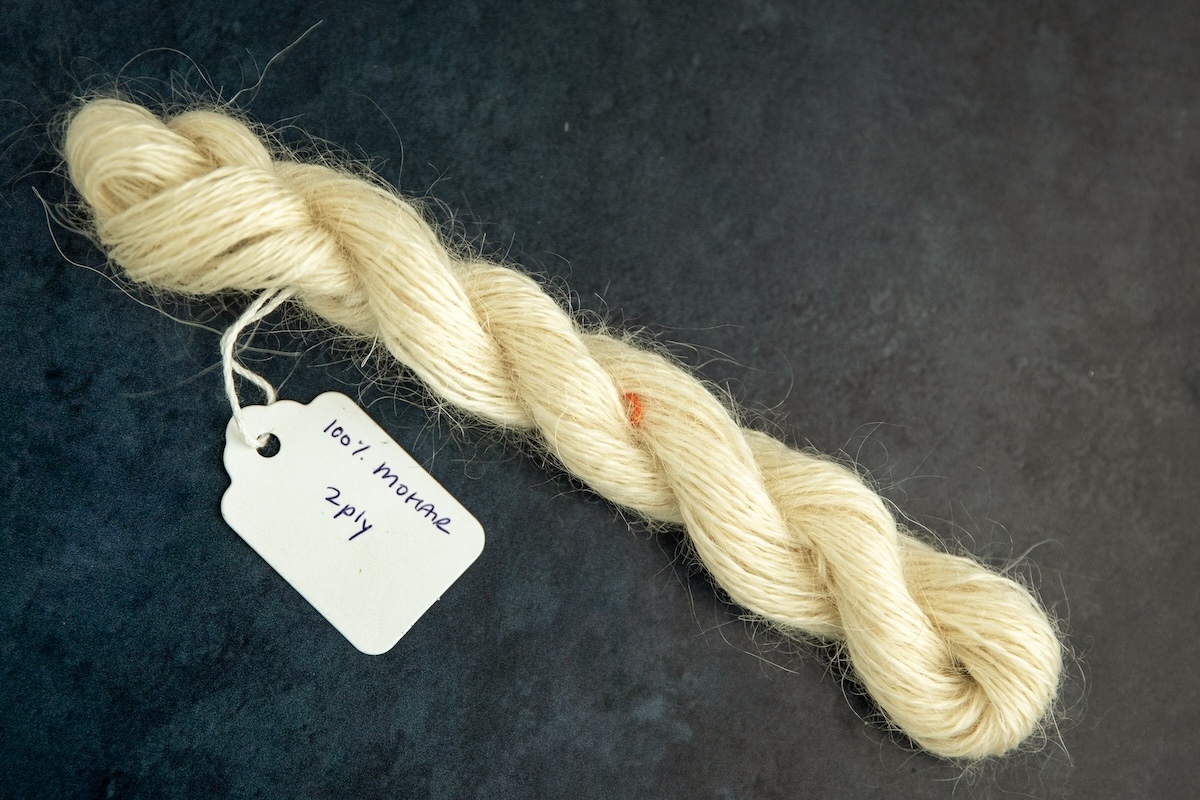
Mohair can be extremely fine or coarser, depending on the age of the goat. In fact, kid mohair is the finest and softest mohair, well-known to knitters, and ranges from 23 to 27 microns. Young goat mohair is slightly coarser at 27 to 30 microns and used by handspinners to create wool-mohair blends, often creating strong, durable and lustrous garments. A great alternative to oil-based nylon is young goat mohair due to its resistance to wear and tear, stretching and pilling! Finally, adult mohair is the coarsest at 30 to 40 microns and is generally used for rugs, upholstery and carpeting.
Mohair dyes easily and results in vibrant colours. Blending mohair with sheep’s wool creates wonderful yarns: durable and hard-wearing with sheen and lustre. Kid mohair can add softness and elasticity to the yarn. Due to the range in micron count, mohair yarns can be spun at a variety of thicknesses. Garments that lend themselves well to mohair blends include socks, mittens and outerwear, such as sweaters. Kid mohair can be blended with wool to create luxury garments, including shawls and scarves, that will be next-to-the-skin soft. Whether used alone or blended with other fibres, it produces yarns that are both beautiful and durable, suitable for a wide variety of projects.
Pygora: Versatility
Bred in the 1980s, Pygora fibre is relatively new to handspinners. A cross between Pygmy and Angora, these small goats produce high-quality fibre. Typically, Pygora goats are shorn twice per yarn, but some breeders prefer to comb or pluck the fibre off the animal to ensure the finest down is collected. On average, a Pygora goat produces 1 to 4 lbs of fibre each year, depending on the type and genetics of the goat.
Pygora goats can produce three distinct types of fibre, each with unique characteristics suitable for different spinning applications. Type A is similar to mohair with its long (more than 6 inches), lustrous and slightly wavy texture. This fibre creates smooth, strong yarns ideal for durable garments that feature sheen and drape, such as shawls and scarves. Type B is a blend of mohair and cashmere-like qualities, including softness and lustre, and can be felted. It is 3 to 6 inches long and the most versatile of the types, ranging from fine to bulky yarn and known for its soft, warm garments. Type C is closer to cashmere as it is very fine, short (less than 3 inches) and soft. This fibre is perfect for fine, luxurious yarns that will be worn next to the skin.
| Pygora Fleece Types | Type A | Type B | Type C |
| Microns | < 28 | <24 | <18.5 |
| Hand | silky, smooth & cool | soft & airy | warm & creamy |
| Guard Hairs | silky in nature | Silky, darker than fleece | coarse, darker than fleece |
| Most like? | Mohair | Mohair-Cashmere | Cashmere |
Depending on the type of Pygora available, combing or carding can be used to prepare the fibre. Type A is especially suited to combing (worsted), while Type C is partial to carding (woollen). Type B can be prepared in a variety of ways, making it the most adaptable for projects. Like the other goat fibres, Pygora lends itself very well to blending with other fibres, including sheep’s wool, silk, alpaca and more. Sheep’s wool can add elasticity, and added sheen from silk can further enhance the qualities of mohair. Pygora goats provide a unique and versatile fibre that is highly valued in the handspinning community.
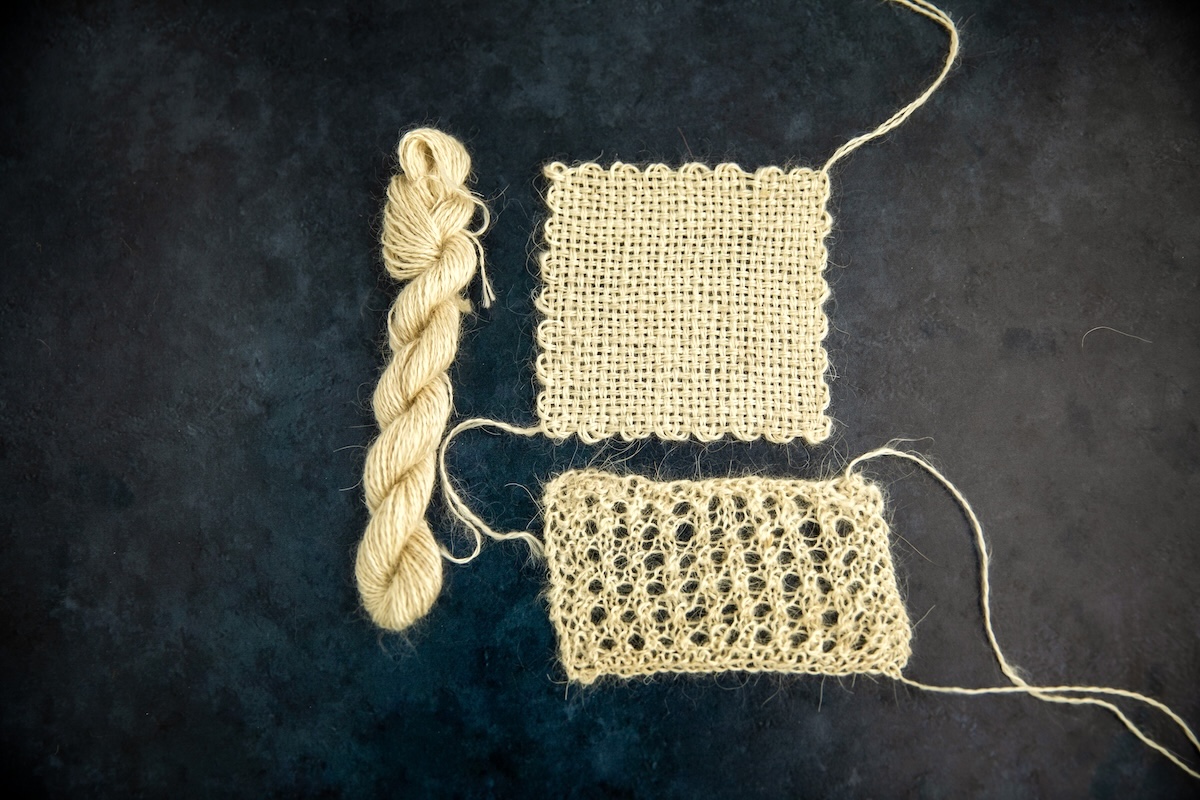
As with goats, rare handspinning fibres offer handspinners a unique and luxurious experience, each bringing its own distinct texture, lustre, and heritage, making them treasured materials for creating one-of-a-kind yarns and textiles.
Yak: Warm, Lightweight Textiles
Yak fibre is a highly valued and luxurious material in the world of handspinning, known for its exceptional warmth, softness, and durability. Derived from the undercoat of the yak, a long-haired bovine native to the Himalayan region, yak fibre has been used for centuries by nomadic peoples to create warm, lightweight textiles. Currently, yak fibre is harvested in regions including Tibet, Mongolia and Nepal. Harvesting using sustainable practices supports the livelihoods of those living in those regions and offers us a glimpse into the rich tradition these animals have with the land and people.
As with other fibres we have studied, yak is known specifically for its softness, which comes from the downy undercoat. It is similar to cashmere, ranging from 16 to 20 microns, making it next-to-the-skin soft. It is also exceptionally warm, which provides an excellent light, insulating layer, even when only a small amount is added to a blend. Yak has a natural elasticity that helps garments maintain their shape, much like sheep’s wool, which helps these yarns remain strong and durable with time. Lastly, yak has excellent moisture-wicking properties that help the wearer stay dry and comfortable.
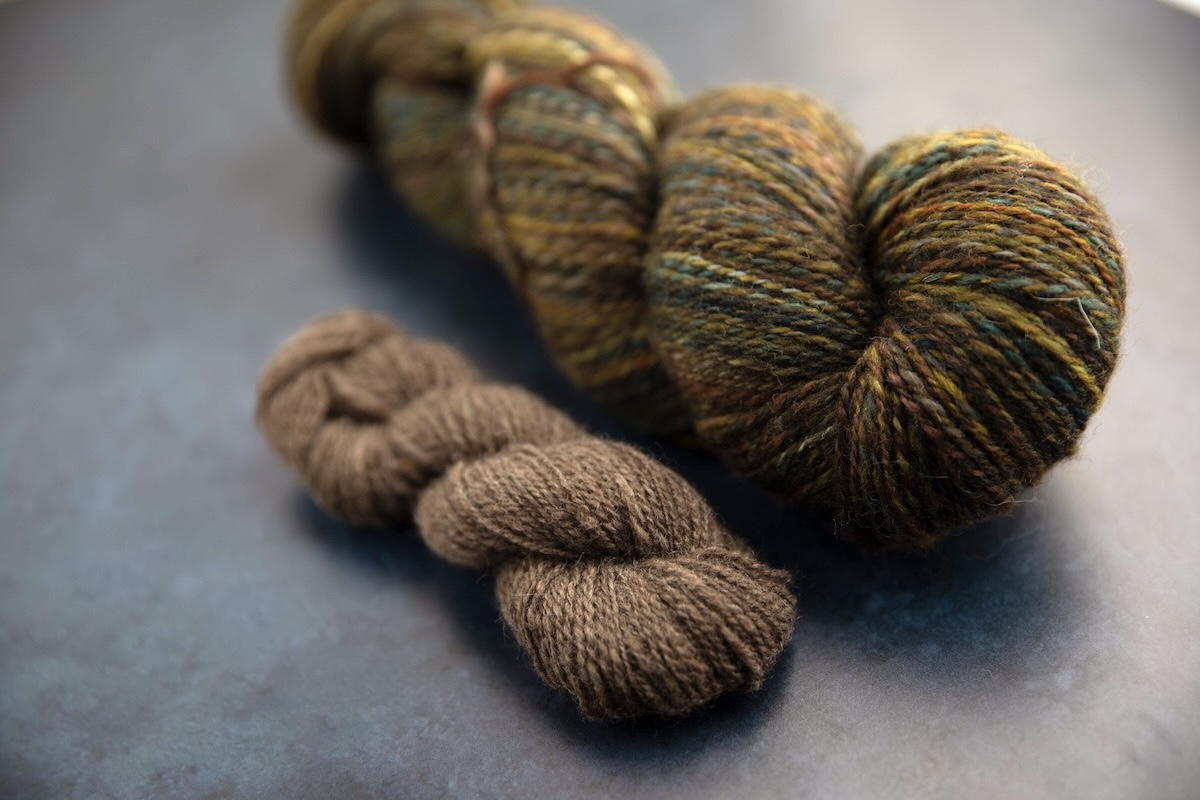
Looking at a yak, one can see there are multiple fibres growing off the animal, including the guard hairs, the mid-layer that is only slightly finer than the coarse guard hairs, and the downy undercoat. Typically, the downy undercoat is obtained by combing the animal during moulting season, namely spring. This is done without harming the animal, which is then released back into the wild. The fibre is then sorted to remove the outer and mid-layer hairs, leaving just the downy undercoat for textiles.
Most often, handspinners will find yak blended with fine wool, such as Merino. The fibre, carefully prepared, can be carded or combed (depending on the length) and spun worsted- or woollen-style. I have had good results from spinning a smooth, consistent yarn in a semi-woollen fashion. Adding wool to yak will enhance elasticity and loft. Blending a fibre like silk will offer lustre and drape. The resulting yarns combined with yak will be incredibly luxurious and next-to-the-skin soft.
Yak fibre is a treasured material in the world of handspinning, offering spinners a luxurious, warm, and soft fibre that is perfect for creating high-quality, comfortable garments and accessories. Its rarity and exceptional properties make it a highly sought-after fibre among spinners and textile artists.
Angora: Rabbits of the Fibre World
Angora rabbit fibre is a luxurious and delicate material prized for its incredible softness, warmth, and lightness. This fibre, often referred to simply as “Angora,” is harvested from Angora rabbits, which are known for their long, fluffy coats. Angora fibre has been used in textiles for centuries and remains a favourite among handspinners and fibre artists for creating soft, airy, and lightweight yarns. Sometimes, Angora goats are confused with Angora rabbits. Angora goats produce mohair, while Angora rabbits produce angora fibre.
Angora rabbits produce slightly different types of fibre, depending on the animal, including English, French, German and Satin Angora. English Angoras produce very fine, soft fibre with lots of halo. French Angora rabbits produce a slightly coarser fibre with less halo but more durability. German Angoras produce dense, soft fibre that is very consistent and is often used in commercial production. Finally, Satin Angora is known for exceptional sheen and smoothness, creating finer, silky fabrics compared to other angoras. It is a great choice for handspinners. Rabbits can be sheared or plucked for their fibre and produce constantly. They can yield around 8 to 12 ounces each year.
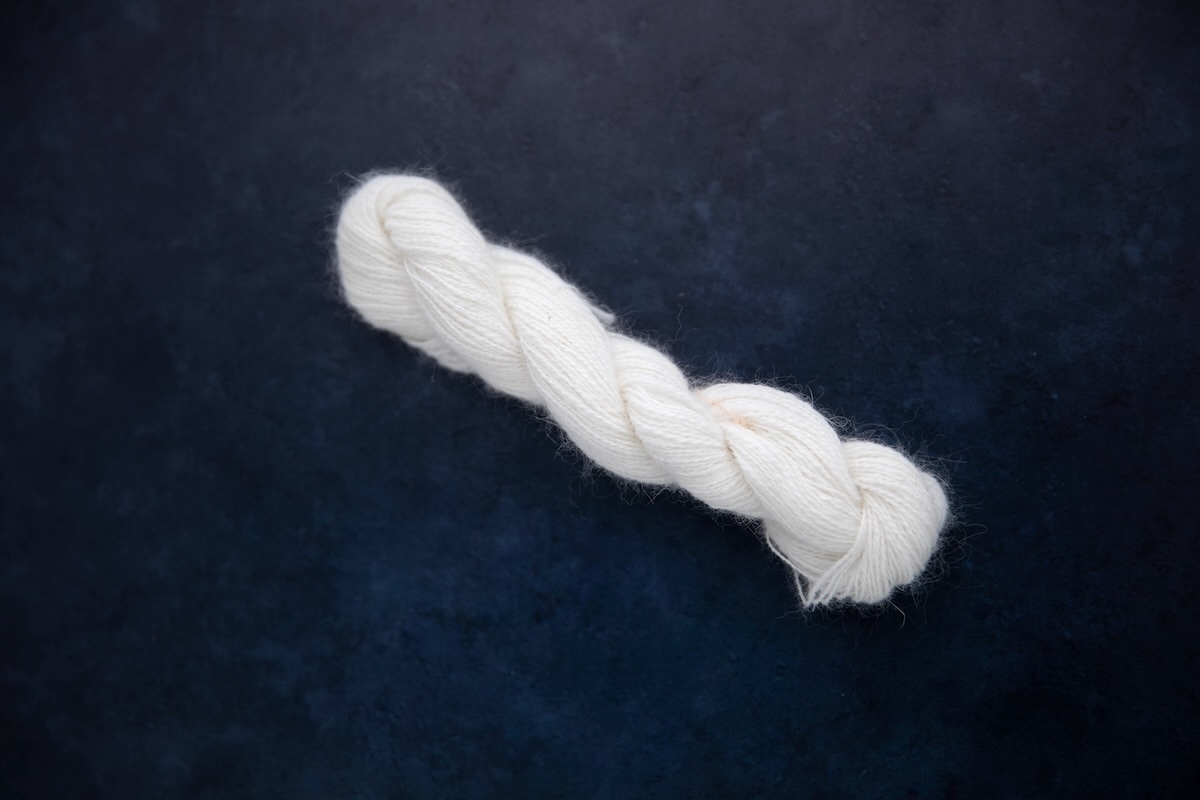
There are many characteristics of angora fibre that are prized by handspinners, including softness, warmth, lightness, sheen, halo and hypoallergenic properties. Angora is one of the softest fibres available on the market at 10 to 16 microns. It is exceptionally warm, providing up to seven times the insulation of sheep’s wool. Due to the hollow nature of the fibres, warm air becomes trapped and acts as an excellent insulator. Angora fibre is incredibly light and airy, so garments will be warm and comfortable but never heavy. The natural lustre that angora offers adds a touch of elegance to the finished garments. There is a distinctive halo, or fuzzy appearance, that develops as the fine fibres protrude from the spun yarn. This seems to happen with time, and it gives Angora fabric a soft, ethereal look and feel. Creating a blend of angora and wool will mimic the properties of a wool yarn held with a kid-silk yarn in many popular patterns! Finally, angora is heralded for its hypoallergenic properties for those allergic or sensitive to sheep’s wool and camelids.
Spinning pure angora produces a luxurious, soft yarn with a very pronounced halo that is ideal for lightweight, warm garments. Tending to spin fine, angora requires enough twist to create a structurally sound yarn but not so much that it is over-twisted and hard. Spinning directly from the fibre, lightly fluffed over the fold or gently carded into light rolags, Angora can be spun semi-woollen or true woollen. I have had good results with both. This will create a fine, light yarn that is suited for warm, soft garments, including sweaters, scarves and shawls. Blending with wool and other fibres helps the angora to go further and offers halo, warmth and luxury to any fibre.
Angora rabbit fibre is a luxurious and versatile material that offers spinners the opportunity to create soft, warm, and lightweight yarns with a beautiful halo effect. Its exceptional qualities make it a favourite among handspinners and fibre artists, suitable for creating high-quality garments and accessories.
Finishing our Luxurious Handspun Yarns
As with all spinning fibres, finishing our yarns can sometimes be somewhat of a mystery, but these goats and rare fibres are pretty straightforward. All of them can be soaked in lukewarm to warm water with a mild detergent (if you suspect there are still spinning oils or dirt in the fibres) or a light wool wash. Do not agitate the water as they can felt; rinse well in similar temperature water and hang to dry. I never weight these yarns but instead, let them hang freely as they dry.
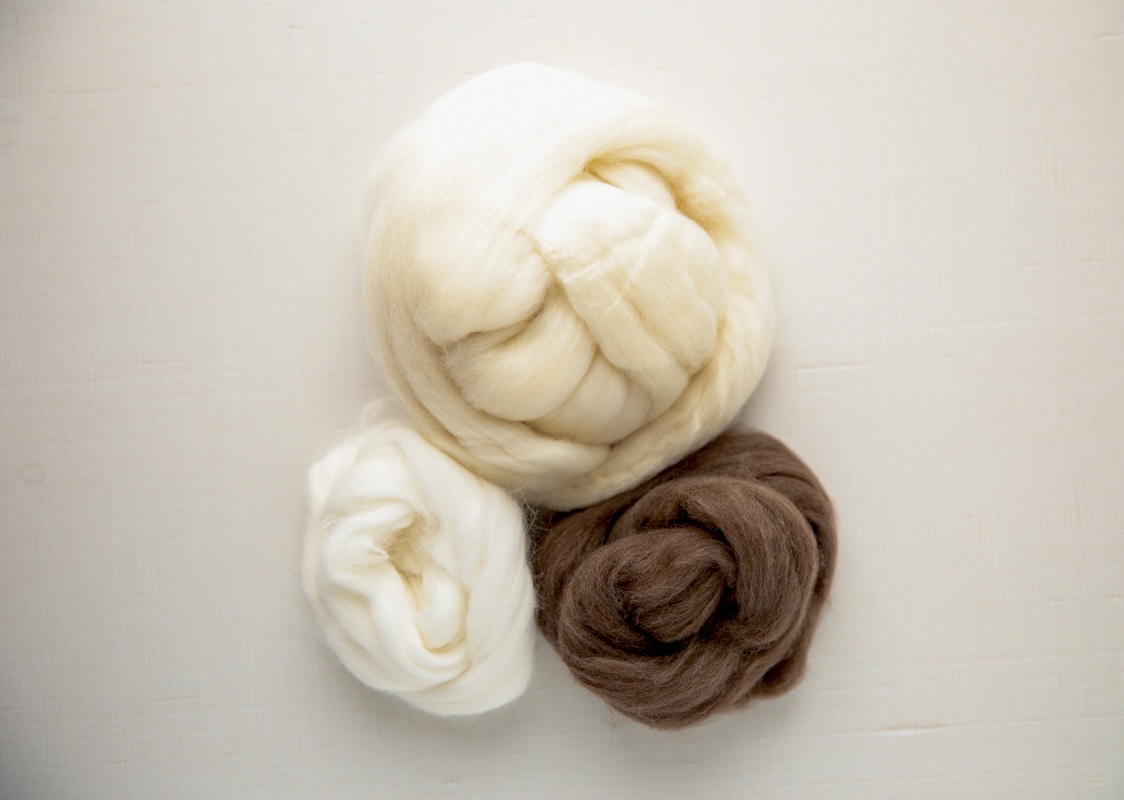
Top: 18-micron Merino, Left: Angora (Rabbit), Right: Yak
Final Thoughts
Handspinning with goat and rare fibres offers a unique and rewarding experience, allowing spinners to work with some of the finest and most luxurious materials available. From the warmth and softness of cashmere and yak to the strength and lustre of mohair and Pygora, each fibre brings its own distinctive qualities to the craft. These fibres not only provide a connection to traditional practices and sustainable farming but also enable the creation of exquisite, one-of-a-kind textiles that are treasured for their beauty and functionality. Whether you’re spinning for personal projects or artisan creations, exploring these rare fibres enriches your spinning journey and adds a touch of luxury to every piece you create.
References & Resources
- Spinning Luxury Fibres: Goats & Rare course, Rachel Smith, 2023 (School of SweetGeorgia)
- How to Create a Warm Yarn, Meagan Condon, Winter 2020 Issue (Ply Magazine)
- Goat Breeds: Pygora, 2019, Goat Extensions
- The Intentional Spinner, Judith MacKenzie McCuin, 2009 (Interweave Press)
- The Fleece and Fiber Source Book, Carol Ekarius, Deborah Robson, 2011 (Storey Publishing)
- The Practical Spinner’s Guide – Rare Luxury Fibers, Judith MacKenzie-McCuin, 2015 (Interweave Press)
Explore more of Rachels’s articles here on SweetGeorgia and her courses at the School of SweetGeorgia!
The post Handspinning Luxurious Fibres: Goats, Rabbits, & Yak! appeared first on SweetGeorgia Yarns.
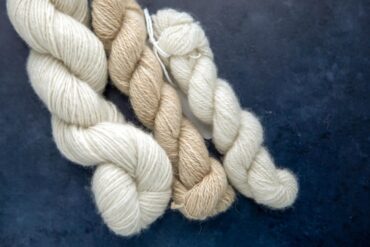
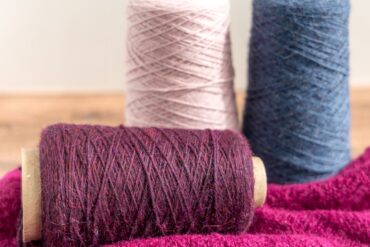
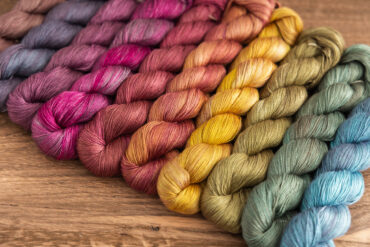
Comments
Post a Comment